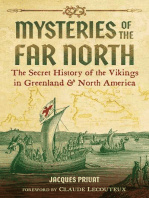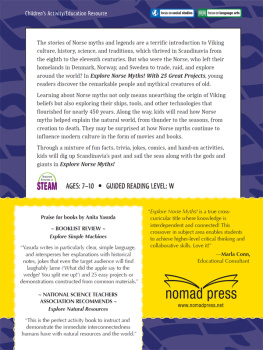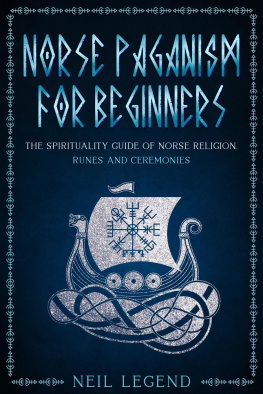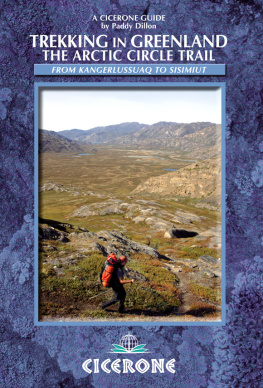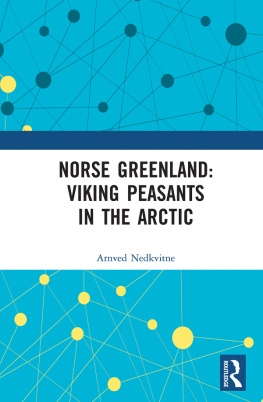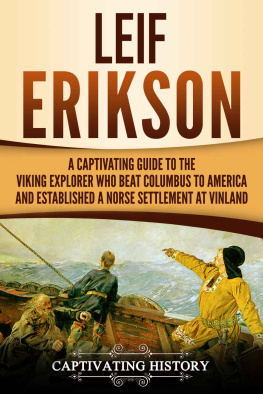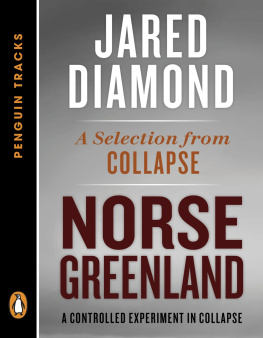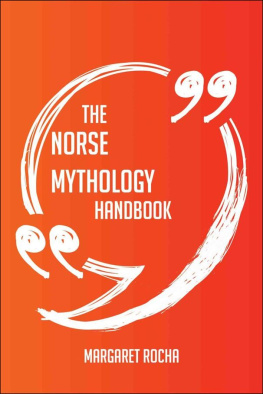
Norse Greenland: Viking Peasants in the Arctic
How could a community of 20003000 Viking peasants survive in Arctic Greenland for 430 years (ca. 9851415), and why did they finally disappear? European agriculture in an Arctic environment encountered serious ecological challenges. The Norse peasants faced these challenges by adapting agricultural practices they had learned from the Atlantic and North Sea coast of Norway.
Norse Greenland was the stepping stone for the Europeans who first discovered America and settled briefly in Newfoundland ca. AD 1000. The community had a global significance which surpassed its modest size.
In the last decades scholars have been nearly unanimous in emphasising that long-term climatic and environmental changes created a situation where Norse agriculture was no longer sustainable and the community was ruined. A secondary hypothesis has focused on ethnic confrontations between Norse peasants and Inuit hunters. In the last decades ethnic violence has been on the rise in Eastern Europe, the Middle East and parts of Africa. In some cases it has degenerated into ethnic cleansing. This has strengthened the interest in ethnic violence in past societies. Challenging traditional hypotheses is a source of progress in all science. The present book does this on the basis of relevant written and archaeological material respecting the methodology of both sciences.
Arnved Nedkvitne is Professor Emeritus of Medieval History from the universities of Trondheim and Oslo. His main field of study has been pre-modern Norwegian social and economic organisation. Relevant monographs include: The Peasant Economy of the Atlantic and North Sea Coast of Norway 15001730 (Oslo 1988, translation of the Norwegian title), Lay Belief in Norse Society (Copenhagen 2009) and The German Hansa and Bergen 11001600 (Cologne 2014).
Norse Greenland: Viking
Peasants in the Arctic
Arnved Nedkvitne

First published 2019
by Routledge
2 Park Square, Milton Park, Abingdon, Oxon OX14 4RN
and by Routledge
52 Vanderbilt Avenue, New York, NY 10017
Routledge is an imprint of the Taylor & Francis Group, an informa business
2019 Arnved Nedkvitne
The right of Arnved Nedkvitne to be identified as author of this work has been asserted by him in accordance with sections 77 and 78 of the Copyright, Designs and Patents Act 1988.
All rights reserved. No part of this book may be reprinted or reproduced or utilised in any form or by any electronic, mechanical, or other means, now known or hereafter invented, including photocopying and recording, or in any information storage or retrieval system, without permission in writing from the publishers.
Trademark notice : Product or corporate names may be trademarks or registered trademarks, and are used only for identification and explanation without intent to infringe.
British Library Cataloguing in Publication Data
A catalogue record for this book is available from the British Library
Library of Congress Cataloging in Publication Data
Names: Nedkvitne, Arnved, 1947- author.
Title: Norse Greenland : Viking peasants in the Arctic / Arnved Nedkvitne.
Description: Abingdon, Oxon ; New York, NY : Routledge, 2019. | Includes bibliographical references.
Identifiers: LCCN 2018003796| ISBN 9780815366294 (hardback : alk. paper) | ISBN 9781351259606 (e-book)
Subjects: LCSH: VikingsGreenlandHistory. | PeasantsGreenlandHistory.
Classification: LCC DL65 .N43 2019 | DDC 998/.2dc23
LC record available at https://lccn.loc.gov/2018003796
ISBN: 978-0-8153-6629-4 (hbk)
ISBN: 978-1-351-25960-6 (ebk)
Typeset in Times New Roman
by Swales & Willis Ltd, Exeter, Devon, UK
The contemporary debate on climate change has increased the interest in the Arctic region, including the Viking peasants who settled in Greenland in AD 985, increased their number to 20003000, and disappeared mysteriously four to five centuries later. In Eastern Europe, the Middle East and Africa there have been ethnic conflicts in recent decades of a type which most people thought belonged to the past. This has made the ethnic tensions between Norse and Inuit relevant for contemporary issues. Was it climate change or ethnic conflict which destroyed the Norse community on Greenland?
The last monograph on Norse Greenland was published in 1982 by the Danish archaeologist Knud Krogh. In the following 35 years research has made great progress. The overwhelming majority of Greenland scholars are today archaeologists educated at universities, a few are anthropologists and historians. Representatives from natural sciences like physics and medicine are engaged in specific tasks. The university tradition has made presentations less descriptive and more focused on analysing problems. This development has made interdisciplinary cooperation more important and fruitful.
Around 1980 the Danish dominance in Greenland scholarship was still overwhelming. Today scholars from many countries participate, most prominent among the new nationalities are the Americans. Norwegian and Icelandic historians are particularly well qualified to write monographs since they are trained to analyse similar societies, and can read sagas, Icelandic Annals and other written sources in the original language. The scholarly progress in the last decades reinforces the need for a new synthesis of Norse Greenland history.
The National Museums in Copenhagen and later in Nuuk have accumulated resources on Norse Greenland in the form of knowledge, artefacts, written reports and literature for nearly two centuries. The most prominent representative of this tradition is today museum curator Jette Arneborg in Copenhagen who in the last 25 years has been the centre of an international research network. Through her I have been given access to numerous excavation and registration reports on paper, others are accessible online. Particularly useful has been the Nationalmuseums Nordboarkiv. Historians mainly get access to archaeological sources through articles and books and their bibliographies and footnotes. But supplementary information obtained through written material and conversations is of great value for scholars without excavation experience.
Enhedssekretr Else Rasmussen at the Medieval Department was very helpful with practical problems during my two stays at the Nationalmuseum in Copenhagen.
Souschef Georg Nyegaard at the National Museum in Nuuk gave me the same kind of help during my stay in Nuuk in 2014. I copied reports, theses and articles which were available at the museum and archive. A sincere thank you to him and the staff of the museum!
Arnved Nedkvitne,
Oslo, June 2018
Greenland is geologically and geographically a part of North America, but politically it is today a part of Denmark. The historical reason for this Scandinavian link was Norse immigrants who settled in Greenland in AD 985 and lived there until at least 1410, i.e. for more than 425 years. This community numbered at its peak 20003000 and brought with them social practices and ideas from their land of origin, which ultimately was the North Sea and Atlantic coast of Norway. Its members were the first Europeans to set foot on American soil, which they called Vinland, and they linked the two continents through their shipping. But the Norse disappeared for some unknown reason, and America had to be rediscovered by Columbus.
How could a community of 20003000 Viking peasants survive for more than four centuries in Arctic Greenland, and why did they finally disappear? These two questions are equally exciting and challenging. They have been discussed for centuries in Scandinavian historiography and were put in a global context by the American physiologist Jared Diamond in his book Collapse from 2005. The disappearance of the Norsemen ca. AD 1415 is one of the great mysteries in world history.
Next page

